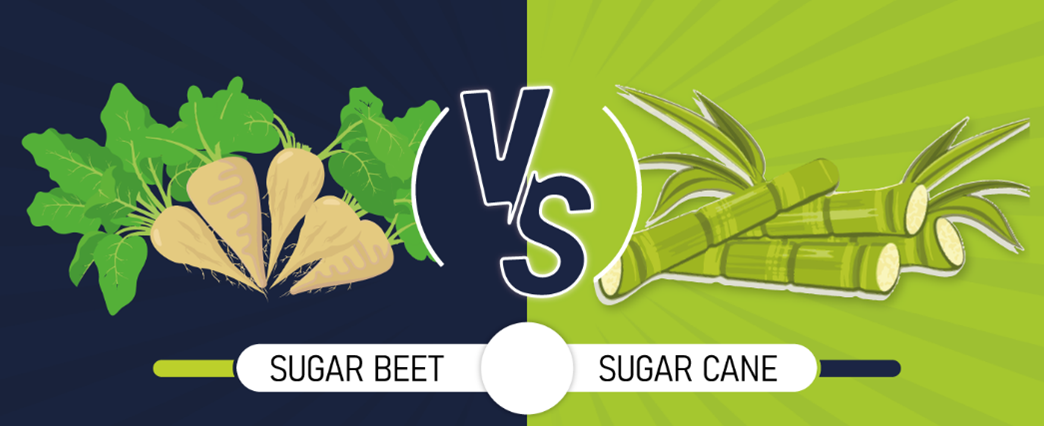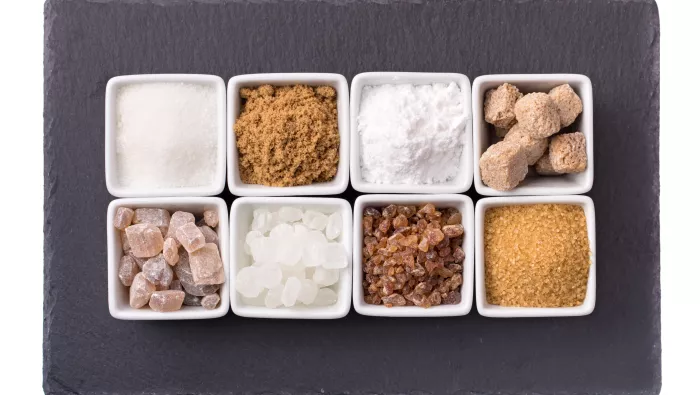Beet Sugar vs Cane: Which One Is Better for Your Health and Diet?
Beet Sugar vs Cane: Which One Is Better for Your Health and Diet?
Blog Article
Beetroot Sugar Vs Walking Stick: Discover the very best Option for Your Sweetening Needs
The option in between beetroot sugar and cane sugar expands beyond simple sweet taste; it encompasses elements such as flavor accounts, manufacturing approaches, and nutritional advantages. The natural undertones of beetroot sugar may not enhance every dish, whereas walking cane sugar is commonly preferred for its clean taste.
Overview of Beet Sugar
Beet sugar, frequently obtained from the sugar beetroot plant, is frequently made use of as an essential sweetening agent in different food. The sugar beet, a biennial plant, prospers in warm climates and is mostly grown in areas such as Europe and The United States And copyright. beet sugar vs cane. The extraction procedure includes slicing the beets and removing the juice, which is after that detoxified and crystallized to produce granulated sugar
One notable feature of beet sugar is its chemical make-up, which is almost identical to that of cane sugar, as both are composed mainly of sucrose. This similarity permits beet sugar to be made use of mutually with cane sugar in recipes and food production.
Beet sugar is also kept in mind for its adaptability in various applications, including baking, drink formulation, and confectionery manufacturing. Additionally, the beetroot sugar sector has actually made strides in sustainable methods, with lots of manufacturers carrying out eco pleasant farming techniques.

Overview of Walking Stick Sugar
Cane sugar, stemmed from the sugarcane plant, is just one of the most commonly acknowledged and utilized sweeteners internationally. It is mainly composed of sucrose, a disaccharide that supplies a wonderful taste account crucial for numerous culinary applications. Walking cane sugar is commonly found in granulated form yet is likewise available as raw sugar, brownish sugar, and powdered sugar, each serving distinctive purposes in cooking and baking.
The cultivation of sugarcane is popular in exotic and subtropical areas, adding to its extensive schedule. The plant flourishes in warm climates, calling for enough sunshine and water for optimal development. Walking cane sugar is usually valued for its natural production technique and marginal handling, which preserves its flavor and nutritional homes.
Along with its culinary uses, walking cane sugar plays a significant duty in the food sector, acting as a preservative, fermentation substrate, and texturizing agent. Its flexibility extends past food, discovering applications in beverages, confections, and even cosmetics. With a long history and a solid cultural existence, walking stick sugar proceeds to be a preferred selection for consumers seeking an all-natural sweetening choice.
Manufacturing Procedures Compared
When comparing the manufacturing procedures of beet sugar and cane sugar, it becomes clear that each approach shows the unique attributes of its source material. Beet sugar production begins with collecting sugar beetroots, which are then washed, cut, and based on warm water removal to liquify the sugar. The resulting juice goes through purification with liming and carbonation, complied with by dissipation to concentrate the visit the website juice. Condensation happens, yielding raw sugar, which is after that fine-tuned to create the final item. useful source
In contrast, walking stick sugar production entails collecting sugarcane stalks, which are squashed to extract juice. The walking cane sugar process includes a longer milling and pushing phase, which assists in extracting optimum juice from the stalks.
Both processes emphasize efficiency, but the methods highlight differences in devices and energy use. Beet sugar has a tendency to have an extra simple handling path, while walking stick sugar manufacturing can be much more complicated as a result of the coarse nature of the walking cane stalks. Ultimately, these differences shape the characteristics of the sugars created.
Nutritional Profiles and Conveniences
Sugar, a staple in numerous diets, varies in nutritional accounts and advantages depending on its source. Both beet sugar and walking cane sugar primarily consist of sucrose, offering similar caloric material-- around 4 calories per gram. Nevertheless, refined differences can affect customer selections and perceptions.
Beetroot sugar is acquired from sugar beetroots, which consist of percentages of minerals and vitamins, such as potassium and calcium, yet these nutrients exist in minimal amounts when eaten in normal quantities. Conversely, walking cane sugar, removed from sugarcane, might offer similar trace nutrients, yet the distinctions are marginal and mostly irrelevant in the context of a well balanced diet.
One significant element is the environmental effect of each source, which can indirectly impact dietary selections. Beetroot sugar production is frequently viewed as more sustainable as a result of reduced water usage contrasted to walking stick sugar farming. Furthermore, some individuals favor beet sugar due to its non-GMO condition in particular areas, potentially lining up with health-conscious consumer patterns.

Flavor Differences and Uses
Distinctive taste accounts define beetroot sugar and walking stick sugar, affecting their applications in various culinary contexts. Beetroot sugar has a slightly earthy taste, which can be associated to the dirt in which the beets are grown. beet sugar vs cane. This refined taste might not be recognizable in most recipes, but it can impact the overall preference in delicate dishes, such as meringues and particular icings. Alternatively, walking stick sugar supplies a cleaner, extra simple sweetness that is frequently he said chosen for cooking and treats, as it improves tastes without eclipsing them.
In practical terms, beet sugar and cane sugar can typically be utilized reciprocally in the majority of recipes. Nonetheless, pastry cooks and culinary professionals often lean in the direction of walking stick sugar for its superior capability to caramelize, which is essential in developing complex taste accounts in confections and sauces. In addition, walking stick sugar is preferred in drinks, as its flavor liquifies seamlessly, preserving the integrity of the beverage.
Eventually, the selection between beet and walking stick sugar might boil down to personal preference and the details needs of the meal, with each kind offering special characteristics that can improve the cooking experience.
Verdict
In recap, the choice between beet sugar and walking cane sugar hinges on certain cooking applications and individual wellness factors to consider. While beet sugar provides a somewhat natural flavor and lasting production benefits, cane sugar's cleaner sweetness is often preferred in baking and delicate recipes. Evaluating the production processes, nutritional profiles, and flavor differences can guide consumers in selecting one of the most ideal sweetener for their requirements, guaranteeing both taste contentment and positioning with dietary preferences.
Beetroot sugar, generally acquired from the sugar beet plant, is frequently made use of as a vital sweetening representative in different food products. Walking cane sugar is frequently discovered in granulated form yet is likewise readily available as raw sugar, brown sugar, and powdered sugar, each offering unique objectives in food preparation and baking.
When contrasting the production procedures of beetroot sugar and walking stick sugar, it ends up being clear that each method mirrors the one-of-a-kind features of its source material. Beet sugar production starts with gathering sugar beets, which are after that cleaned, cut, and subjected to warm water extraction to liquify the sugar. Beet sugar often tends to have an extra simple handling path, while cane sugar production can be a lot more complex due to the fibrous nature of the cane stalks.
Report this page